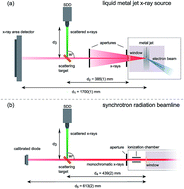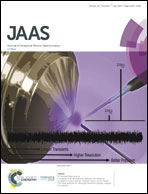Photon flux determination of a liquid-metal jet X-ray source by means of photon scattering
Abstract
Liquid-metal jet X-ray sources promise to deliver high photon fluxes, which are unprecedented for laboratory based X-ray sources, because the regenerating liquid-metal anode is less sensitive to damage caused by an increased electron beam power density. For some quantitative X-ray analysis techniques, knowledge of the absolute photon flux is needed. However, a precise experimental determination of the photon flux of high-performance X-ray sources is challenging, because a direct measurement results in significant dead time losses in the detector or could even harm the detector. Indirect determinations rely on data base values of attenuation or scattering cross sections leading to large uncertainties. In this study we present an experimental determination of the photon flux of a liquid-metal jet X-ray source by means of elastic and inelastic photon scattering. Our approach allows for referencing the unpolarized output radiation of the liquid-metal jet X-ray source to polarized synchrotron radiation in a simple setup. Absolute photon fluxes per solid angle are presented with a detailed uncertainty budget for the characteristic emission lines of Ga Kα and In Kα for two different acceleration voltages of the X-ray source. For a nominal setting of 200 W (70 kV, 2.857 mA) the determined values for Ga Kα and In Kα are 6.0(5) × 1012 s−1 sr−1 and 3.8(4) × 1011 s−1 sr−1, respectively.



 Please wait while we load your content...
Please wait while we load your content...